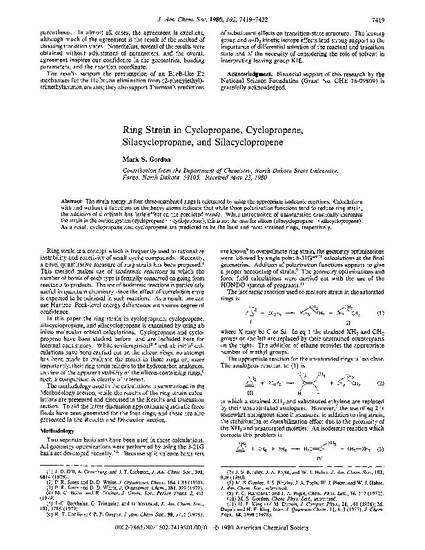
Article
Ring Strain in Cyclopropane, Cyclopropene, Silacyclopropane, and Silacyclopropene
Journal of the American Chemical Society
(1980)
Abstract
The strain energy in four three-membered rings is calculated by using the appropriate isodesmic reactions. Calculations with and without d functions on the heavy atoms indicate that while these polarization functions tend to reduce ring strain, the addition of d orbitals has little effect on the predicted trends. While introduciton of unsaturation drastically increases the strain in the carbon system (cyclopropane---. cyclopropene), this is not the case for silicon (silacyclopropane--+ silacyclopropene). As a result cyclopropane and cyclopropene are predicted to be the least and most strained rings, respectively.
Disciplines
Publication Date
December, 1980
Publisher Statement
Reprinted (adapted) with permission from Journal of the American Chemical Society 102 (1980): 7419, doi:10.1021/ja00545a002. Copyright 1980 American Chemical Society.
Citation Information
Mark S. Gordon. "Ring Strain in Cyclopropane, Cyclopropene, Silacyclopropane, and Silacyclopropene" Journal of the American Chemical Society Vol. 102 Iss. 25 (1980) Available at: http://works.bepress.com/mark_gordon/24/
